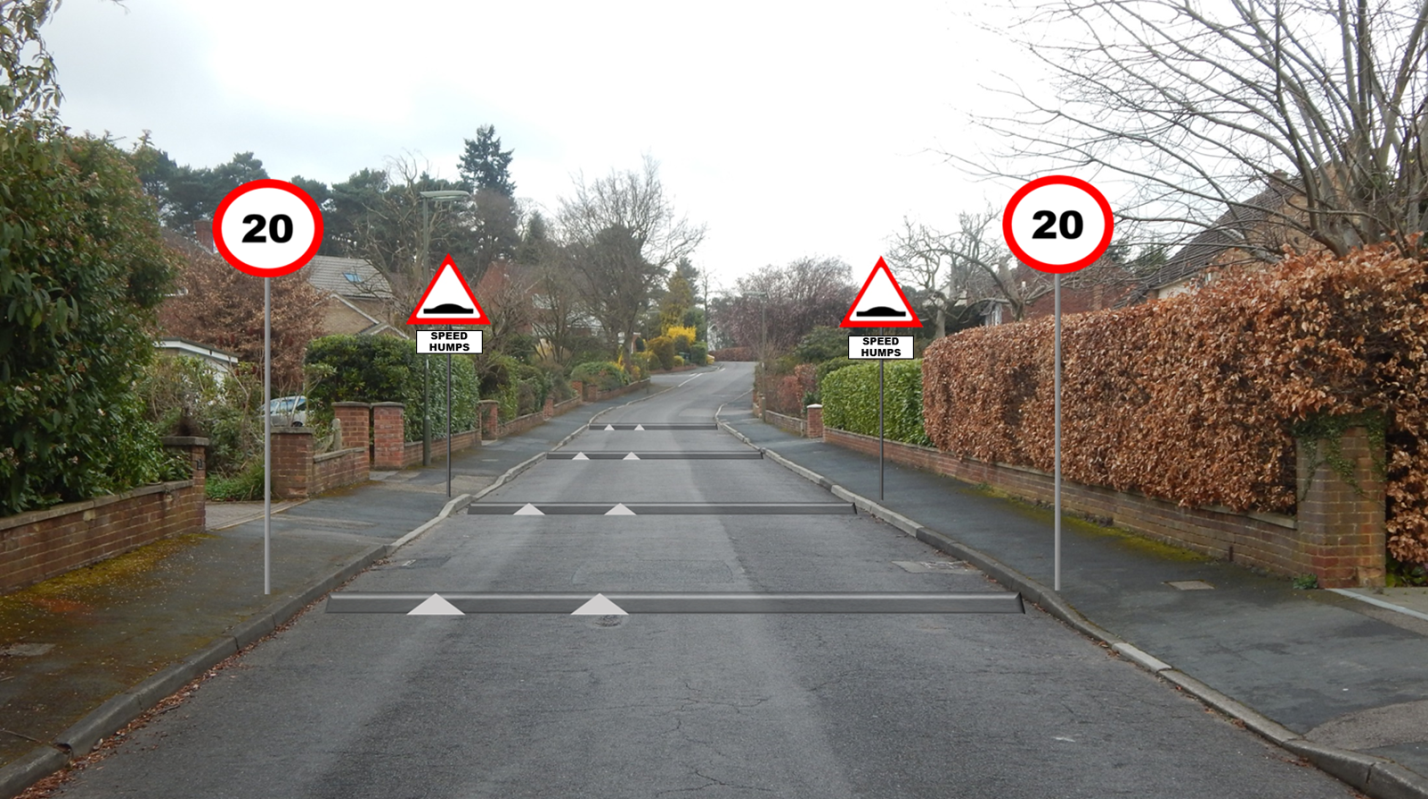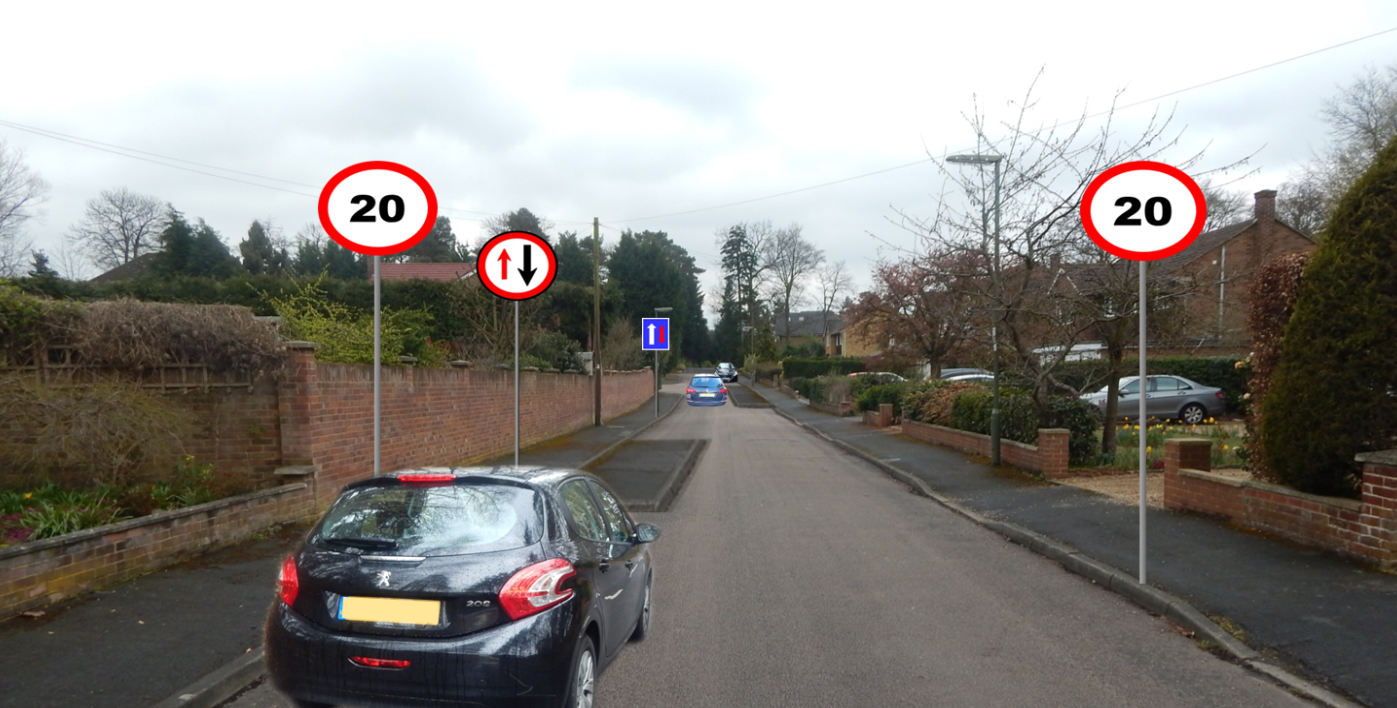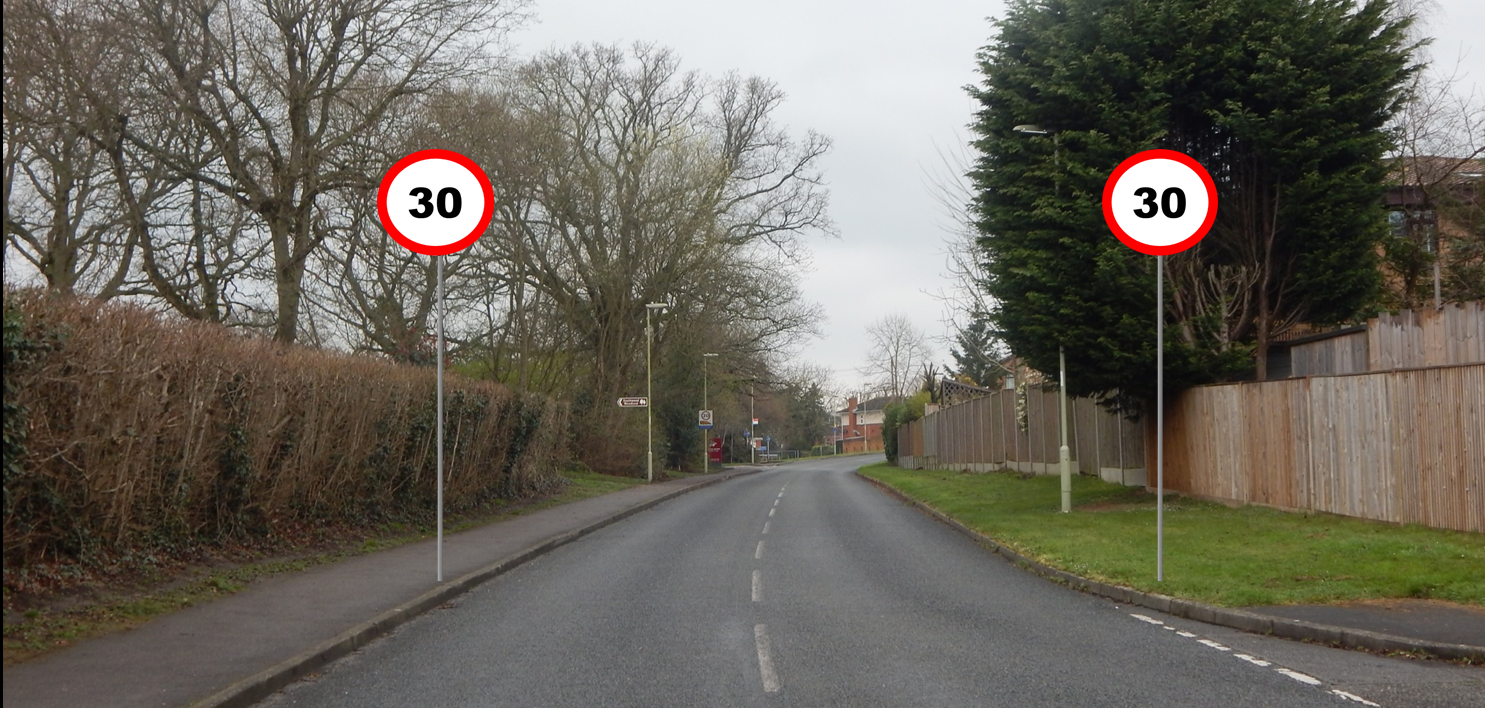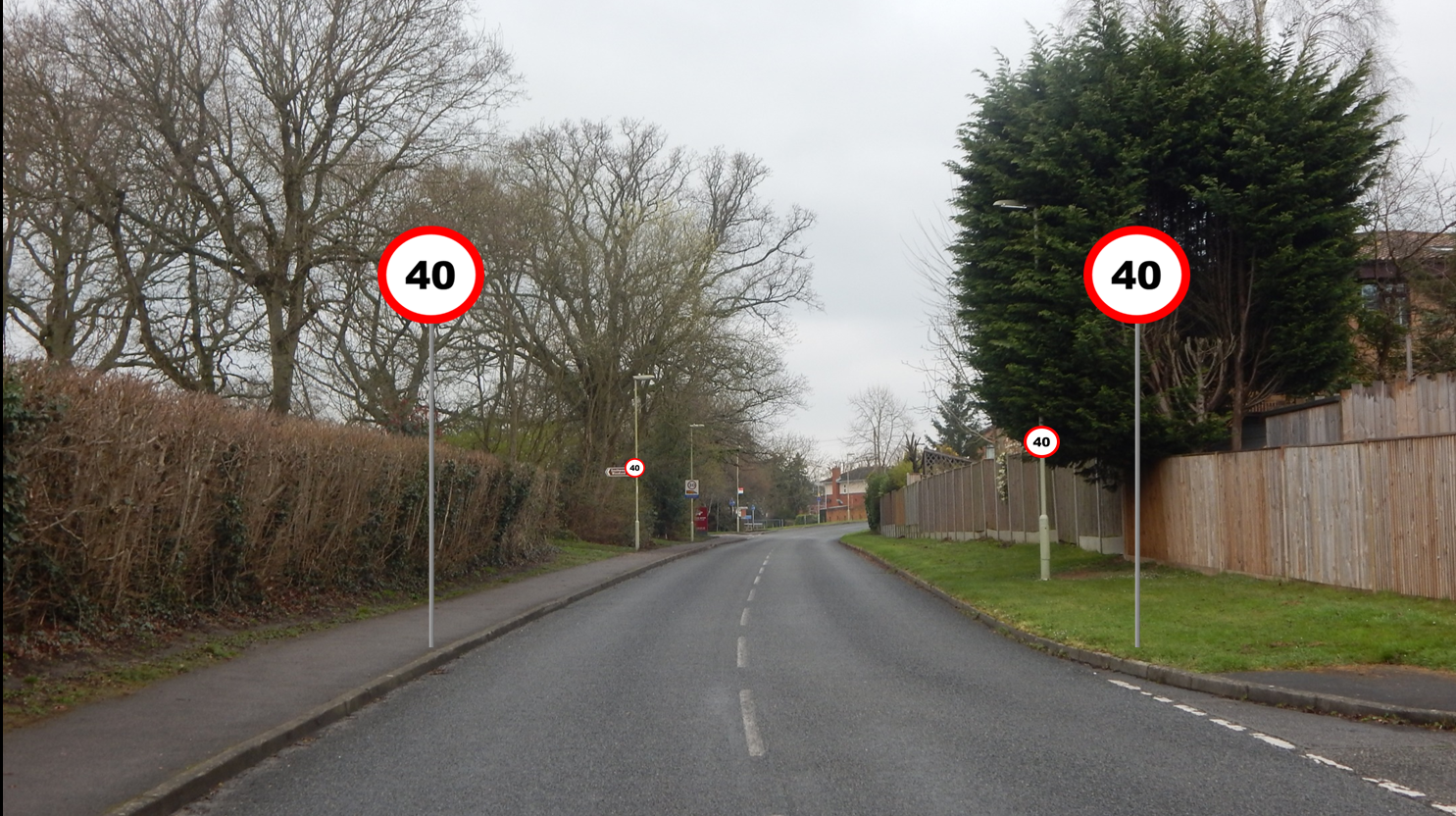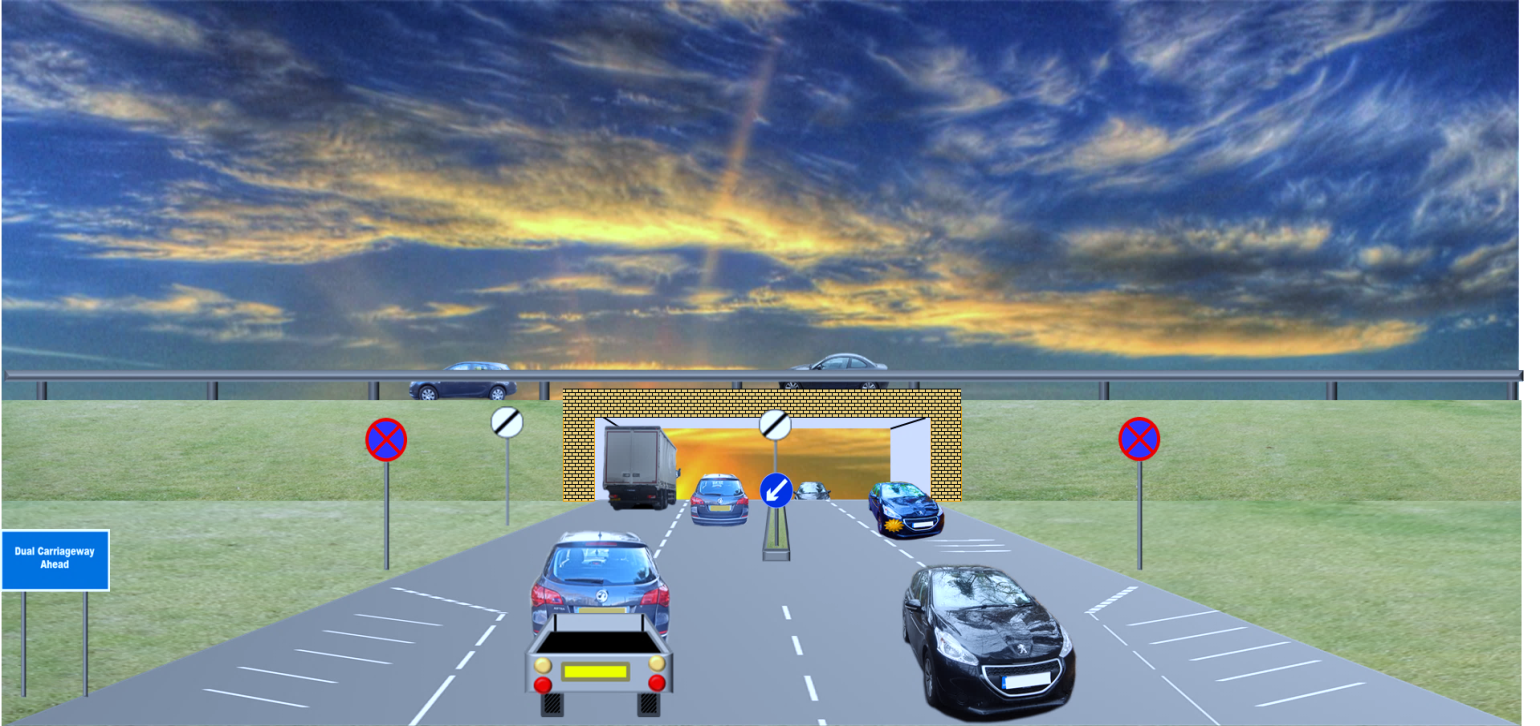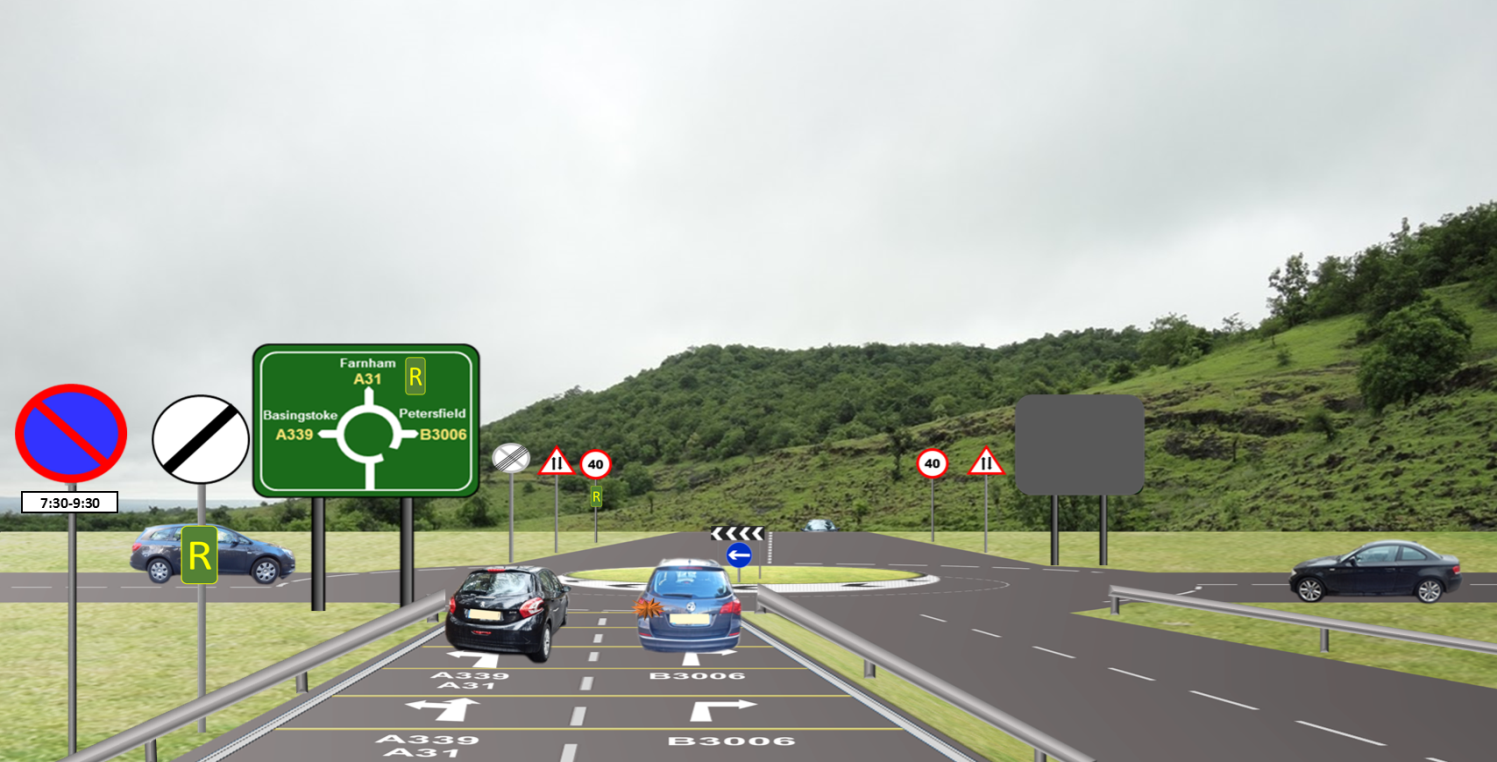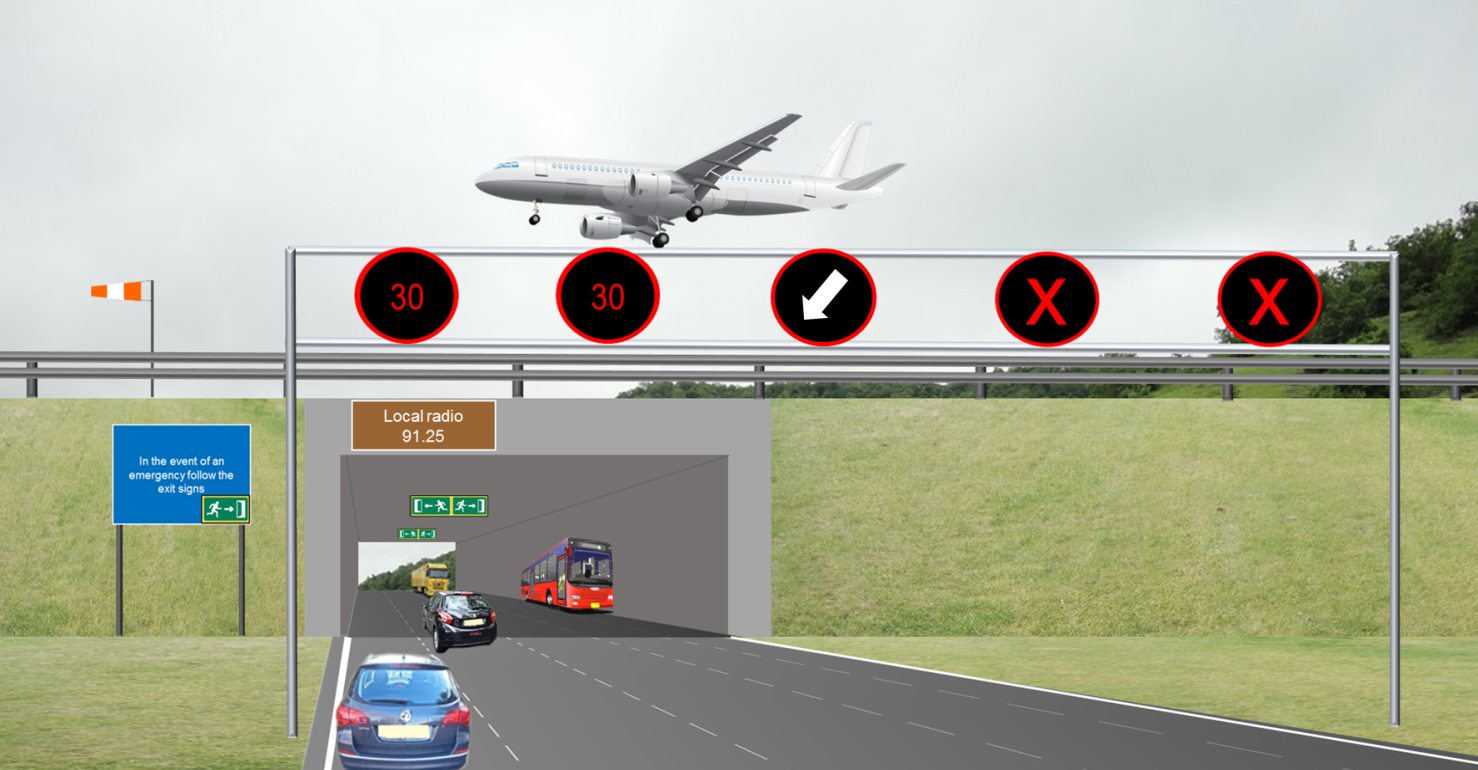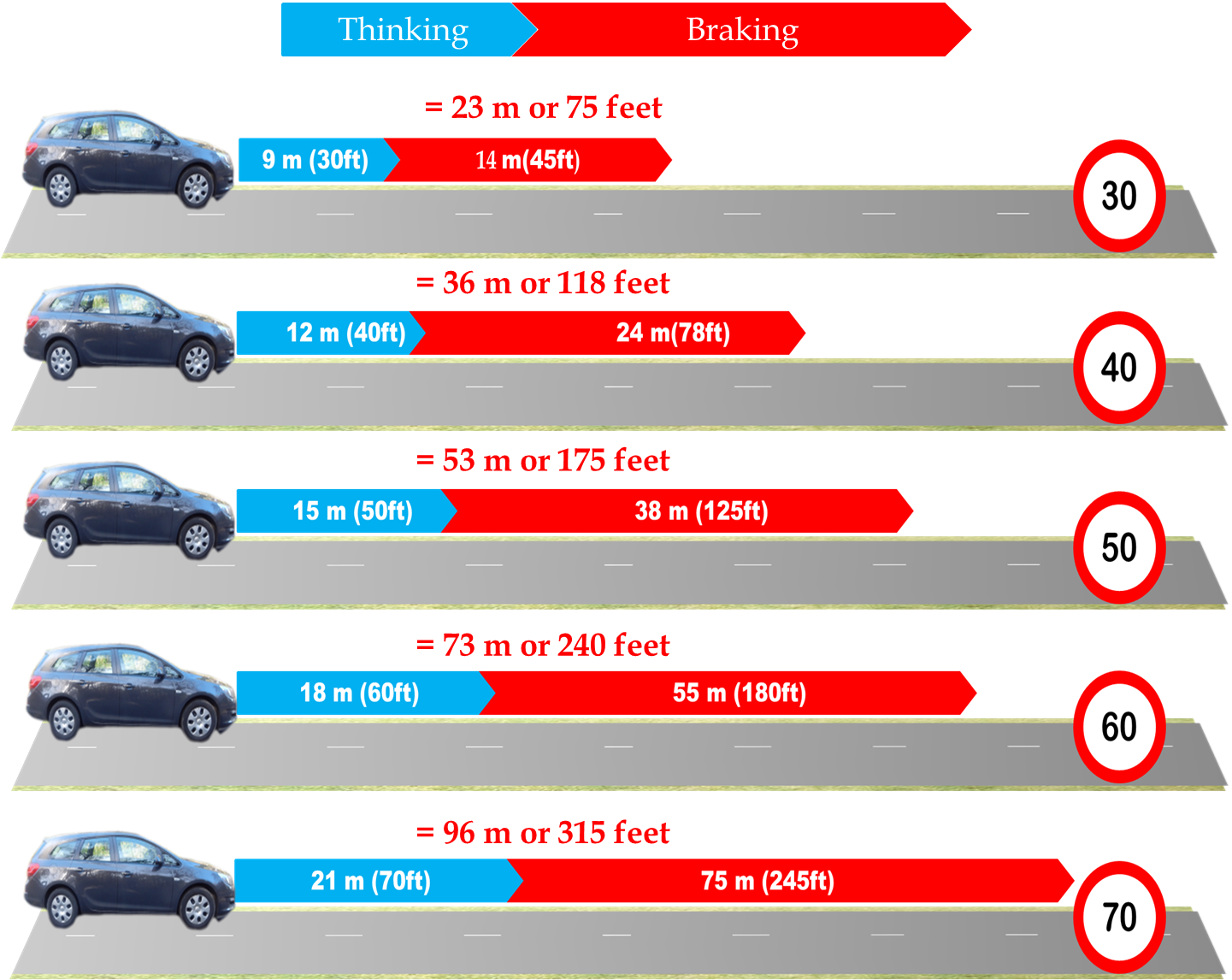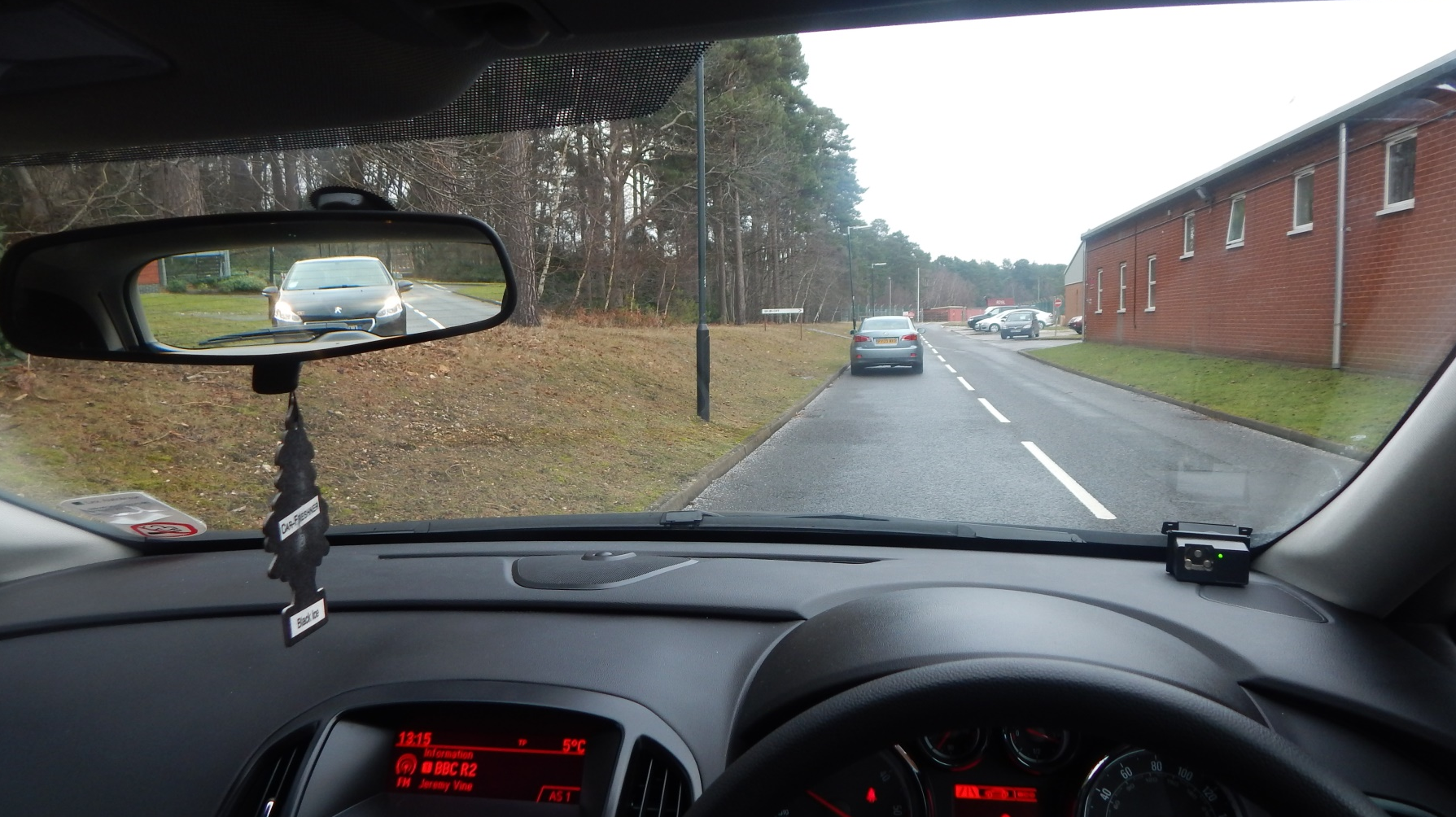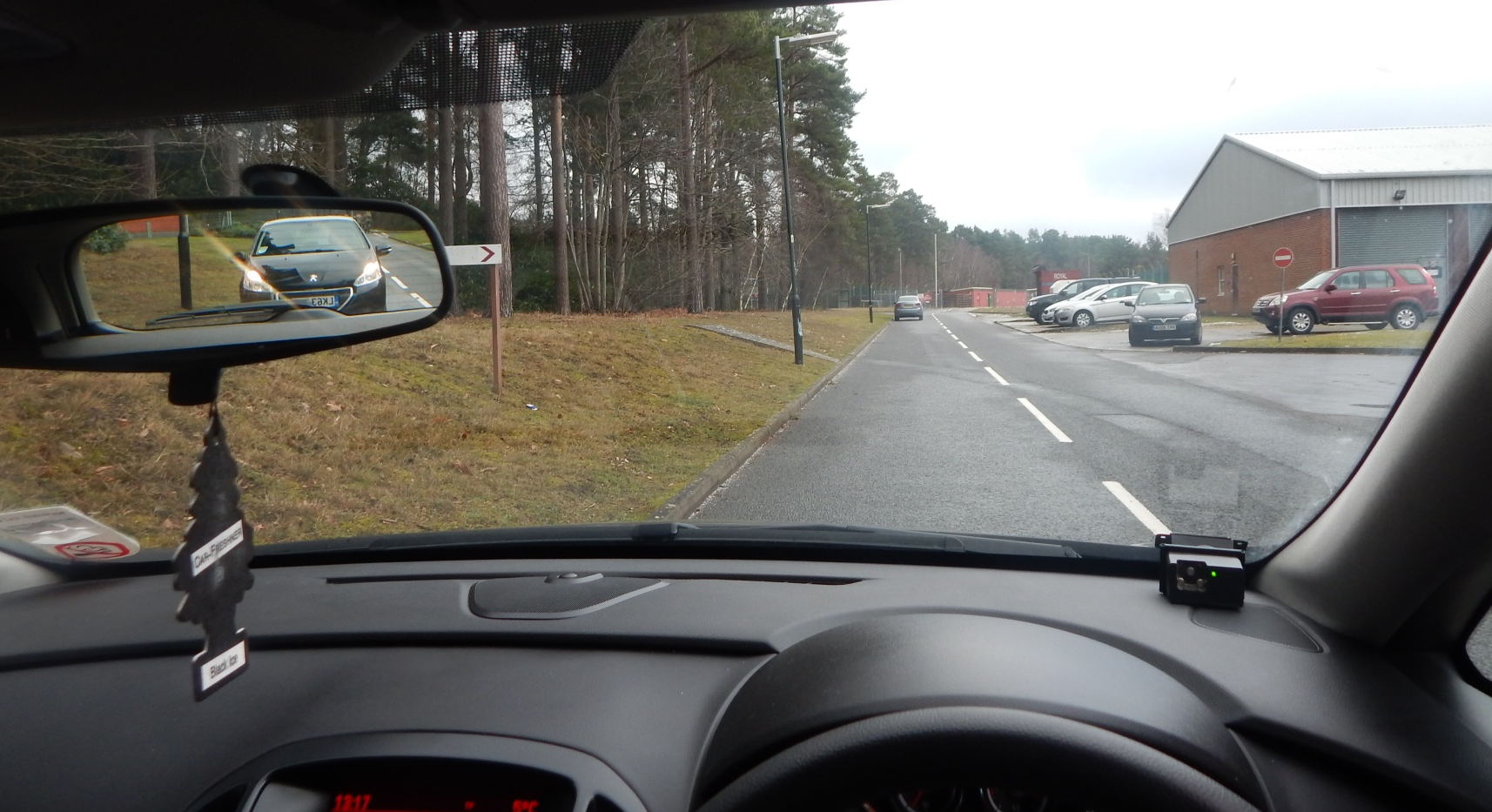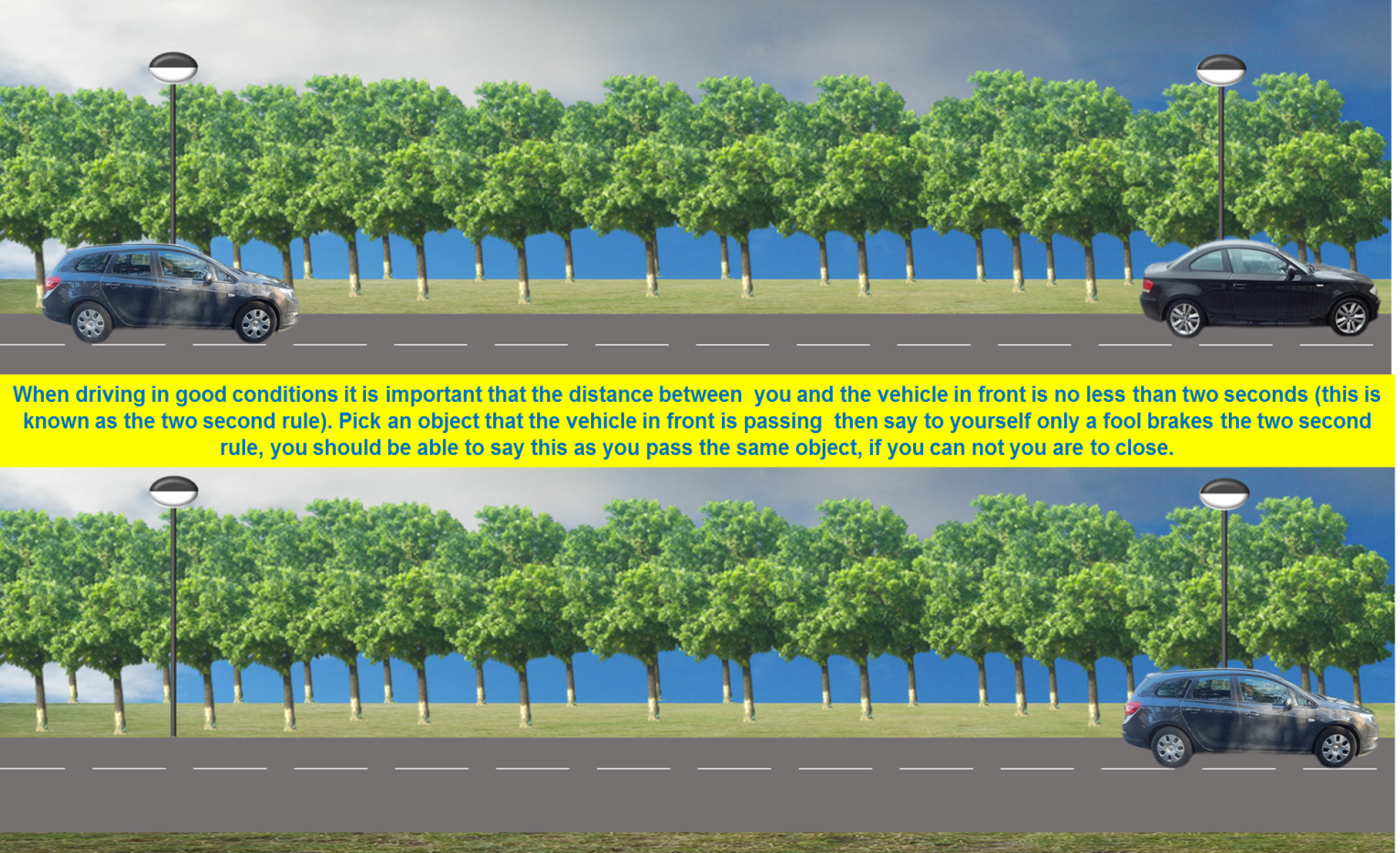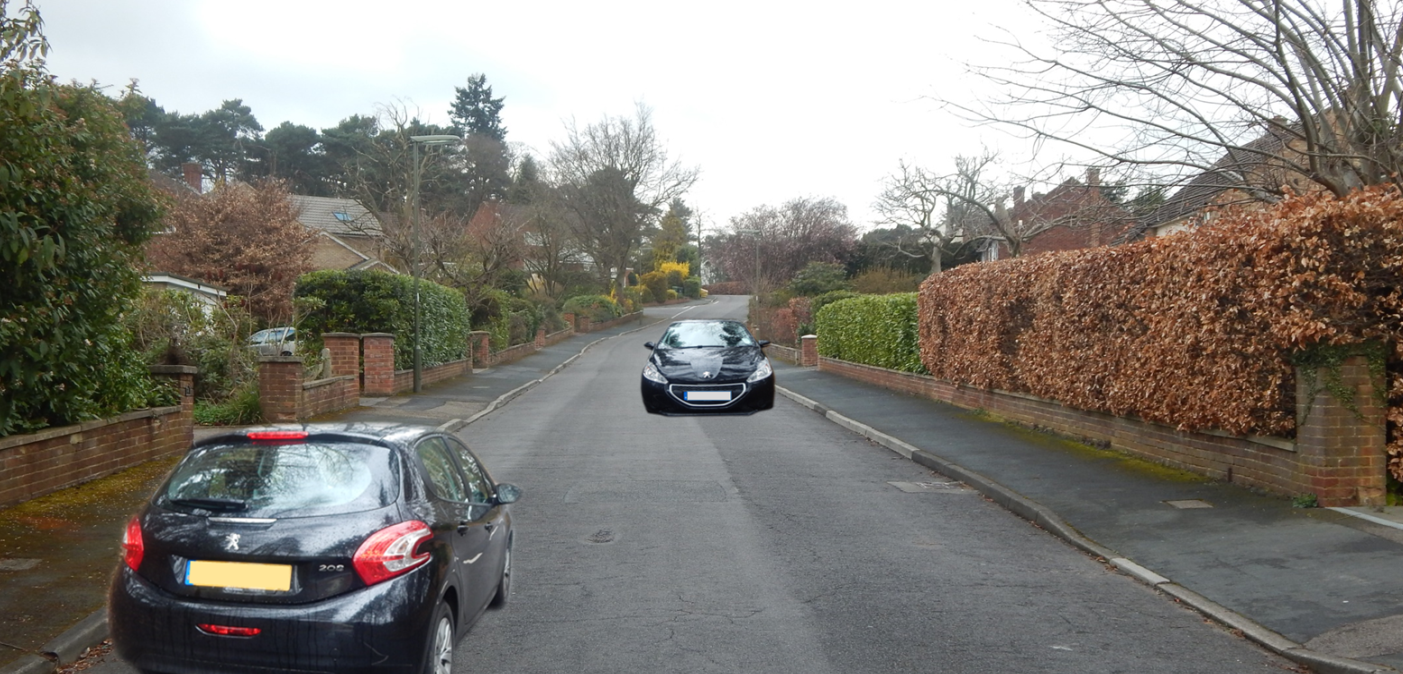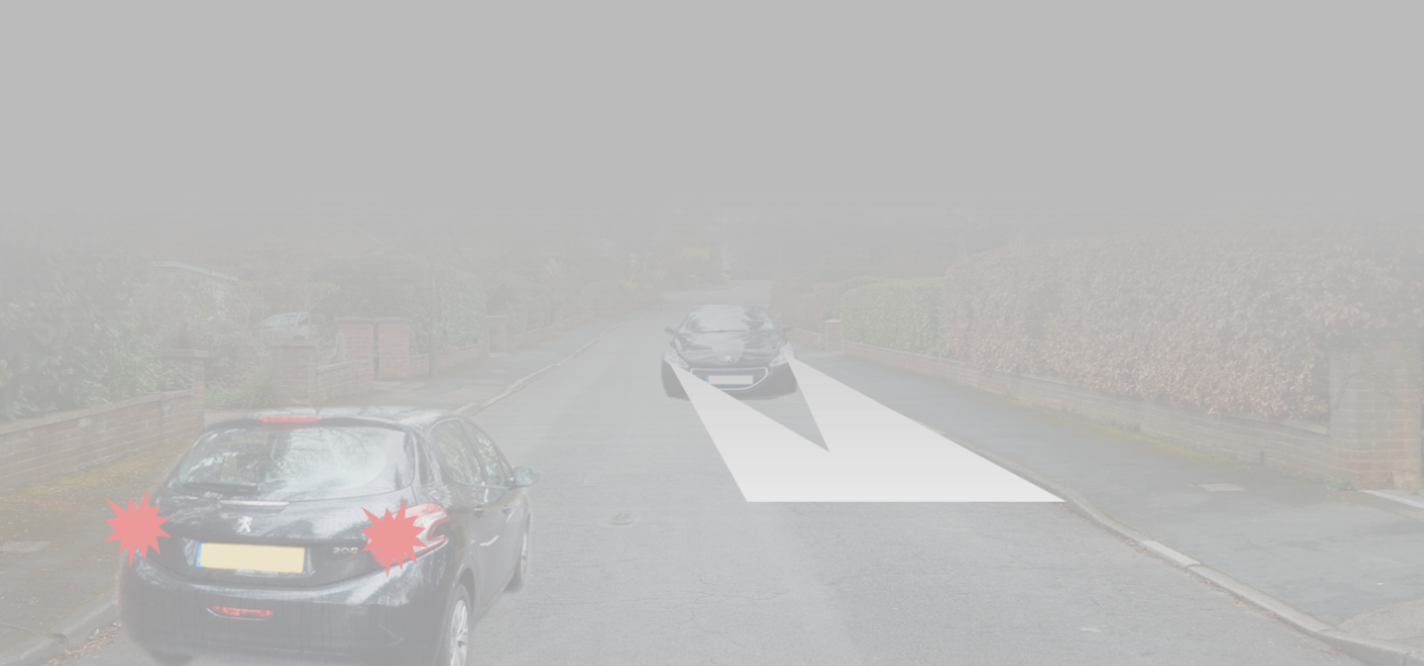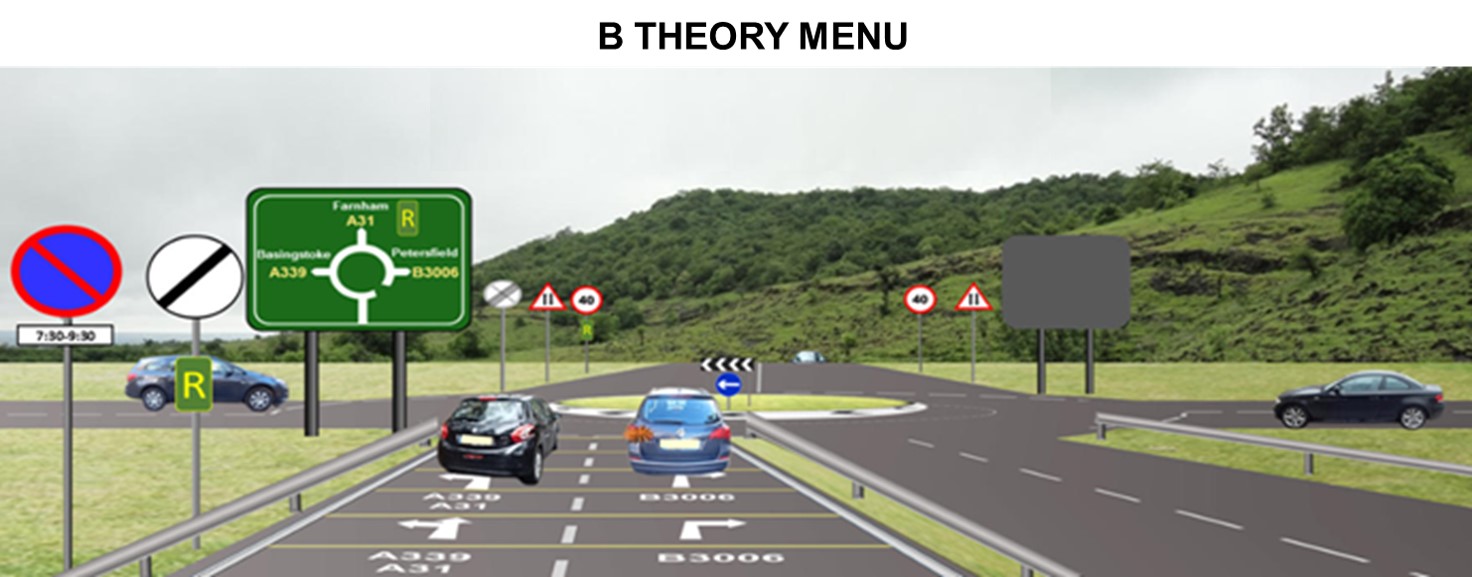SPEED AND SAFETY MARGINS
This section covers speed and safety margins. In some residential areas the speed limit has been reduced to 20 mph. These reductions to the speed limits have been implemented due to speeding traffic, giving concern to local residents. Extra traffic calming has been put in place such as speed humps.
In the picture you can see speed humps and the appropriate warning signs. Going over these speed humps too fast can cause damage to your suspension system and could cause you to lose control of your vehicle. You may find that you have to drive slower than 20 mph when driving over them to reduce any likelihood of damage. 20 mph is the maximum speed, it does not mean you cannot drive slower.
These traffic calming islands are classed as chicanes. The first sign is a mandatory sign telling you that oncoming traffic has right of way. This is indicated by the black arrow. The second sign (blue) is an instructional sign telling you that you have right of way but show caution. This is indicated by the white arrow. In both cases the red arrow means you need to stop and give way to the oncoming traffic.
When you have entered a 30 mph zone, there will be no other reminders. The next change of speed will be indicated by a new sign.
This could be 20, 40 ,50 or even national speed limit. You must be observant as exceeding the speed limit could result in a fixed penalty and points on your licence. This will increase your insurance costs and if you have had your licence less than two years a ban. You might find yourself having to take all tests again including the theory test.
When driving in a 40 mph zone, you can see from the picture there are smaller reminder signs often at alternate sides of the road.
In the picture there are street lights and there are no restrictions to parking. you must make sure that you park with flow so traffic travailing in the same direction as you will see your rear reflectors at night.
In a 40 mph zone with no street lights you must leave your parking lights on.
The national speed limit differs depending on the type of road you are driving on. When travelling on a dual carriageway in a car it is 70 mph. If you are towing a trailer your the speed limit is reduced to 60 mph.
On some dual carriageways you might find lower speed limits especially as you approach built up areas.
These will be indicated by signs, so stay alert at all times.
When nearing the end of a dual carriageway there will be signs warning you of this.
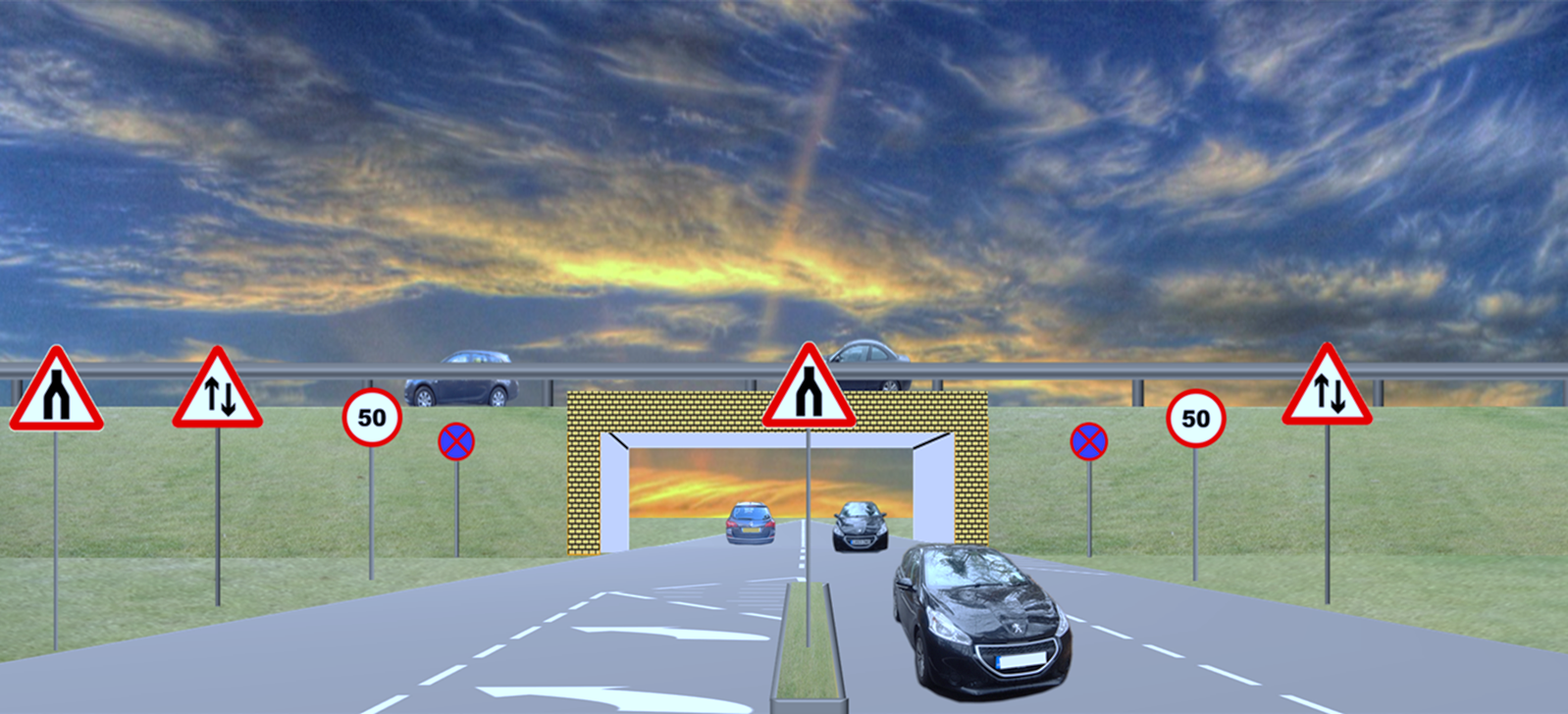
In this picture you must reduce your speed to 50 mph. This also applies to cars towing a trailer.
If at the end of the dual carriageway the two way road still shows a national speed limit sign, the speed limit on a two way road is 60 mph for a car and 50 mph if you are towing a trailer.
You are coming to the end of a dual carriageway. There are yellow, slightly raised speed awareness lines painted across the road. These are also known as rumble strips.
As you drive over them you will experience vibration from your tyres and an increase in noise drawing your attention to the speed you are doing.
Just because the national speed limit still applies it does not mean you should still be doing that speed on approach to the junction. Always drive at a speed to suit the road and conditions and slow down gradually and in good time to reduce the risk of a collision. Remember in bright sunlight your brake lights may not be immediately obvious to following drivers so avoid late braking.
This is a tidal flow system. It can be found on many city roads and tunnels especially under large rivers.
It allows the flow of traffic to change during peak times.
You are driving towards the tunnel and there are only two lanes available. The speed limits showing on the overhead gantry are mandatory.
These speed limits are variable and at peak times can change. The reason is to help the traffic flow and ease congestion.
OVERALL STOPPING DISTANCES
Overall stopping distances are made up of two elements, thinking distance and braking distance. The statistics say that the thinking distance is equivalent to the miles per hour you are travelling. If you are travelling at 40 mph you will have travelled 40 feet before you react. The questions on the test give answers in both feet and metres. For the purpose of this section it is easier to work them out in feet.
The questions on the test are asked in two different ways. What is the stopping distance and what is the braking distance. To know the braking distance you have to know the stopping distance then subtract the thinking distance. At 30 mph multiply 30 x 2.5 this will give 75 ft, this is the stopping distance. To get the braking distance subtract the speed you are doing 75 ft – 30 = 45 ft this is the braking distance.
For every 10 mph increase in speed you need to increase the multiplication by 0.5.
40 x 3.0 50 x 3.5 60 x 4.0 70 x 4.5
All of these work out apart from 40 mph, the answer on the test is 118 ft. and not 120 ft.
Hopefully this will help you learn and remember the relevant thinking and braking distances.
ABS
Anti-lock braking system or anti-skid braking system (ABS) is a safety system which allows the wheels to maintain tractive contact with the road surface according to driver inputs whilst braking.

This prevents the wheels from locking up (ceasing rotation) and avoiding uncontrolled skidding. it also allows you to steer at the same time.
However, you should not rely on this system as it will not reduce your stopping distances. If you have ABS on your vehicle, you will still have to brake normally.
VEHICLES DRIVING TOO CLOSE
You are driving down the road and through your rear view mirror you notice that the vehicle behind you is too close.
This is called tailgating.
Even though you are being sensible and have kept a safe distance from the vehicle in front of you, if you had to brake suddenly you could find yourself involved in an accident as the vehicle behind you would not have the room or time to react.
If you find yourself in this situation slow down gently by easing off the accelerator, increasing the gap from the vehicle in front.
This will allow you and the vehicle behind more time to react and hopefully avoid a potential incident.
SAFETY MARGINS
When driving in good conditions, i.e. a good dry road surface ,irrespective of the speed that you are driving at, you should always apply the ‘Two Second Rule’. It is important that you drive with consideration for other road users at all times, and do not rely on additional safety features that come with your vehicle such as Anti-lock braking systems (ABS) and Electronic stability control (ESC).
During normal driving, ESC works in the background and continuously monitors steering and vehicle direction. It compares the driver’s intended direction to the vehicle’s actual direction. To put in into context, it gives early warning of your vehicle loosing control.
It is important that the distance between you and the vehicle in front is no less than two seconds. Pick an object the vehicle in front of you is passing then say to yourself only a fool breaks the two second rule. You should be able to this before you pass the same object. If you can’t then you are too close. This only applies in normal circumstances when the road surface is dry.
Practice this and you will get used to the correct distance and be able to adjust when road conditions change. There is another way of calculating the safe distance between you and the vehicle in front. Allow 1 metre or 1 yard per mile per hour, if you are driving at 50 mph, allow 50 metres or 50 yards.
On wet road surfaces the safe distance between you and the vehicle in front should be doubled, and on ice or snow covered roads the separation distance should be increased by up to ten times.
DRIVING IN FOG
This picture shows a street in good daylight driving conditions.
Now look at the same street in the picture below. You could be forgiven for not recognising it as the same road.
You could find yourself suddenly and without any warning driving in fog. Your visibility will be greatly reduced. If this happens slow down and increase your distance from the vehicle in front as you will need more time to react.
Turn on your dipped headlights and if visibility becomes less than 100 metres switch on your rear fog lights.
It is important to remember that when visibility improves to more than 100 metres turn off your fog lights again as their brightness can obscure your brake lights.
DRIVING IN RAIN
When driving in the rain the road surface can in places become flooded. When there is a large amount of surface water your vehicle tyres can lose contact with the road surface. This is called aquaplaning and you will lose control of the vehicle and the steering will become light.
If you find your vehicle aquaplaning reduce your speed until you regain control but do not brake. Surface spray will be thrown up from the vehicle in front making visibility poor. Switch on your dipped headlights and increase your gap from the vehicle in front to four seconds or more.
DRIVING IN SNOW
Driving in falling snow can be a frightening experience in itself. There are several winter precautions you can take. Always carry a change of clothes, including boots in your vehicle. Extra equipment such as a shovel and hessian sacks could help you if you get stuck. The hessian sacks should be placed under the wheels to give you grip. Snow chains can also be used. These wrap around each wheel giving extra traction. If you lose control of your vehicle and go in to a skid, steer gently into it. I.e. If the rear of your vehicle slides to your right, then steer gently right. Your actions should be gentle and not aggressive. Do not brake if you can avoid it, as this can increase the skid, but do take your foot off the accelerator until control is regained.
When driving in snow increase your gap from the vehicle in front considerably as it can take up to ten times the normal distance to stop.
In any situation when braking if you feel your vehicle pulling to the right or left, release the pressure on the foot-brake until control is regained.
When driving on snow or ice, drive in the highest gear that is permissible with the lowest amount of acceleration.



